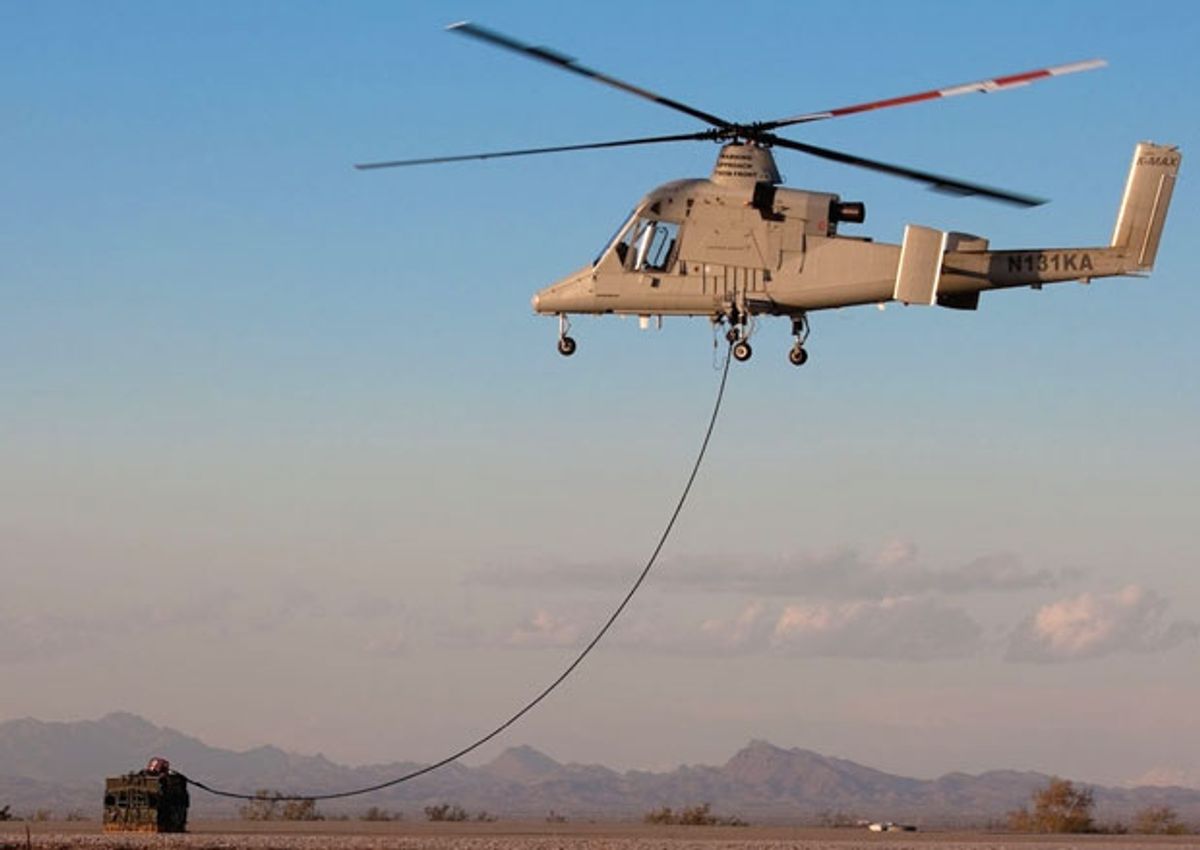In December of 2011, the U.S. Marines took delivery of a pair of Kaman K-MAX helicopters that Lockheed Martin had modified for autonomous cargo delivery. But after the robot helicopters were sent to Afghanistan, we heard nothing more about the program. Until now.
Apparently the testing program was extraordinarily successful, which is good news for the U.S. military’s plan to replace as many humans as possible with robots.
The autonomous K-MAX robocopters were originally scheduled to spend just six weeks in Afghanistan undergoing evaluation as they delivered pallets of cargo to remote bases. But the robots did such a fantastic job that their contract with the Marine Corps was extended indefinitely. It only ended (after nearly three years) because the Marines require less logistical support now.
Two K-MAX helicopters were modified by Lockheed to be optionally manned, meaning that a human pilot can still fly them, but it’s not necessary. The copters can be programmed to hover while cargo is slung beneath them, and then they’ll deliver their loads (750 pounds, or 0.3 metric tons, to start with, although the maximum lifting capacity is 6,000 pounds, or 2.7 metric tons) to anywhere within 250 miles (about 400 km). Since they’re robots, they have no trouble navigating through mountains at night, which makes them ideal for the situation in Afghanistan.
The K-MAX helicopters are designed to be reliable and require low maintenance; their dual-rotor design makes them, in some ways, less complicated than conventional helicopters (they have a single engine and transmission and don’t need a tail rotor, for example). Still, they are not immune to problems, and one of the robocopters suffered a bad landing last year.
In total, the autonomous K-MAXes flew thousands of missions, hauling over 2,000 metric tons of cargo. One even managed to deliver 13 metric tons of cargo in a single day, over the course of six missions. With breaks for maintenance, the robots can fly indefinitely, without having to worry about getting tired. And if anything bad does happen, you lose an expensive robot, but not an irreplaceable human.
It remains to be seen whether the autonomous K-MAX will be adopted more permanently into a resupply role, but the Marines were both surprised and impressed with how well the robots performed. Going forward, Lockheed will be developing tech to make the robots even more autonomous, taking humans out of the loop for attaching loads and enabling formation flying and in-flight reroutes.
[ Lockheed Martin ] via [ Danger Room ]
Evan Ackerman is a senior editor at IEEE Spectrum. Since 2007, he has written over 6,000 articles on robotics and technology. He has a degree in Martian geology and is excellent at playing bagpipes.



